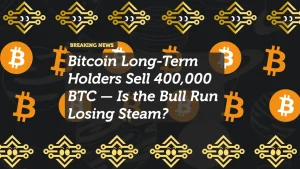
Bitcoin Faces $2.8 Billion Long Liquidations — Deleveraging Phase Could Soon End
November 6, 2025 — The crypto derivatives market just witnessed one of its largest liquidation events of the year. According to a new Bitfinex market report, more than $2.8 billion in Bitcoin (BTC) long positions were wiped out over the past two days as price volatility surged.
The flush came as BTC briefly slipped below $108,000, triggering a cascade of margin calls across major exchanges. This broad-based liquidation sent shockwaves through both futures and perpetual markets, erasing overleveraged bets that had accumulated during the October rally.
Bitfinex: Deleveraging Could Be Entering Its Final Stage
Bitfinex analysts interpret the latest liquidation wave as a potential sign of market stabilization ahead.
“Extreme liquidation events often mark the end of a deleveraging cycle rather than the beginning of a new downtrend,” the report stated.
The data shows that open interest on major Bitcoin derivatives exchanges has dropped nearly 19 % since Monday, suggesting that speculative leverage is being flushed out of the system.
Historically, such large-scale deleveraging events have preceded major rebounds — as seen in August 2023 and March 2024, when Bitcoin rallied more than 30 % in the weeks following comparable liquidation totals.
What Triggered the Liquidations
Several converging macro and on-chain factors contributed to the liquidation spike:
- Rising Treasury yields and a stronger USD pressured risk assets, including Bitcoin.
- Overcrowded leveraged longs built up during last week’s bullish momentum above $114,000.
- A surge in exchange inflows signaled short-term holders preparing to take profits.
Once BTC dipped below key technical levels — particularly the $110,000 and $107,500 supports — liquidation algorithms accelerated selling pressure across futures platforms.
Market Sentiment: Fear Rising, But Opportunity Emerging
Despite the sell-off, long-term holders appear to be largely unfazed. On-chain data from Glassnode indicates that BTC held for more than six months remains near record highs, suggesting conviction among “diamond hands.”
Meanwhile, the Bitcoin Fear & Greed Index has fallen back to 42 (“Fear”) — its lowest level in over a month — a sentiment zone often associated with buy-the-dip accumulation.
Bitfinex analysts emphasize that the reduction in leverage can reset market conditions for a healthier advance:
“The cleansing of excess leverage brings stability, paving the way for sustainable upside once funding rates normalize.”
Technical Outlook: Key Levels to Watch
- Support: $106,800 – $107,000 (zone of prior consolidation)
- Resistance: $112,000 (short-term pivot) / $118,000 (stronger barrier)
- RSI: 36 (on daily timeframe, signaling near-oversold conditions)
If BTC holds above $107,000 and spot demand returns, a relief rally toward $115,000 remains plausible. Conversely, a decisive break below $105,000 could open the door to a deeper test of $100,000 — a psychological line many analysts view as the cycle’s floor.
Why This Deleveraging Matters
Large-scale liquidations serve as the market’s self-correcting mechanism — eliminating speculative excess and improving structural stability. For professional traders, this can present opportunities:
- Lower funding rates make new long entries more attractive.
- Reduced open interest lessens volatility spikes.
- Spot market accumulation often resumes once leveraged positions are purged.
In essence, while the immediate pain of liquidations is sharp, such wash-outs have historically set the stage for the next leg up in Bitcoin’s longer-term bull trend.
Outlook: Capitulation, Then Recovery?
With funding rates resetting and open interest collapsing, the current environment suggests deleveraging may be nearing its conclusion.
If macro conditions — including Fed policy expectations and ETF inflows — remain supportive, analysts expect Bitcoin could regain footing above $115,000 – $120,000 in the coming weeks.
As one Bitfinex strategist summarized:
“This kind of capitulation usually means we’re close to the bottom, not the top.”
















